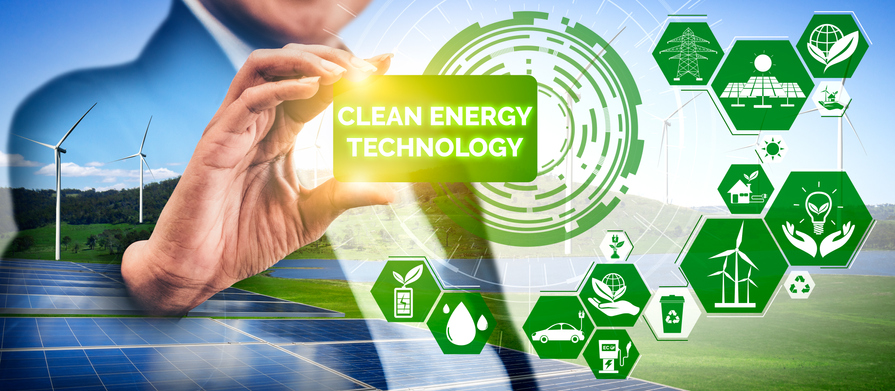Verde Energy serves residential and business customers with renewable energy, notably solar, wind, and hydroelectric power.
Today’s heightened interest in renewable energy has led to greater research into its efficacy and value and a more nuanced discussion of its pros and cons. One distinction important to keep in mind: “Renewable” doesn’t always mean “sustainable” or “zero-carbon” by nature. Here’s what you should know.
Defining “renewable”
In precise terms, “renewable” means literally what it says. In order to be “renewable,” a source has to be constantly available and accessible, supplying energy while being naturally replenished. In the words of the U.S. Energy Information Administration, a renewable energy source is one that is “virtually inexhaustible.”
Truly renewable energy sources like solar, wind, and hydroelectric power release no greenhouse gas emissions into the atmosphere. As such, they do not directly contribute to global warming.
Yet even with renewables, there are a few tradeoffs.
Keeping carbon in perspective
While solar and wind power generation releases no carbon dioxide or other greenhouse gases, some of the activities surrounding the production of energy from these sources do. The manufacture, installation, operation, and maintenance of components used in renewable energy production all release carbon into the environment.
Still, experts note that the carbon generated by manufacturing and operations throughout the renewables industry is far less than the carbon produced by the fossil fuels industry.
Solar panels are made from silicon, which requires heating to unusually high temperatures to achieve proper shape. This means that carbon dioxide is emitted as an inherent part of the manufacturing process. By three years of use, however, long-lasting solar panels have typically repaid their carbon debt and achieved carbon-neutral status.
The overall environmental impact of manufacturing in the renewables industry is becoming more manageable all the time. New technologies are helping renewables achieve greater and greater energy efficiency, and on a larger and larger scale, throughout their cycle of production and operation.
Additionally, once a renewable energy facility has been constructed, the cost to maintain and operate it has become relatively minimal, and tends to remain stable over time.
Water, water everywhere
Hydroelectric power is another renewable energy source that does not directly emit harmful gases. However, the environmental effects can be significant.
Major dam systems associated with hydroelectric power can disrupt water ecosystems and harm wildlife. Drought can also cause operational problems with hydropower equipment. In these cases, local authorities typically turn back to coal and gas to replace the lost energy. As a 2018 study showed, reliance on hydropower can inadvertently result in higher carbon emissions when this happens.
Even when hydroelectric plants are able to work seamlessly and at full capacity, the decaying organic matter found in associated reservoirs emits methane. Methane is a potent greenhouse gas—it already accounts for about one-fifth of global greenhouse gas emissions.
Still, as with other renewables, a broad consensus of experts finds hydropower an improvement over fossil fuels.
For regions where tidal and ocean wave energy are practicable alternatives, they hold immense clean energy potential and aren’t affected by drought. Tidal energy systems also do not require the construction of dams and reservoirs.
The journey from the center of the earth
Geothermal energy is produced from the heat stored in the earth’s crust. Like solar, wind, and hydropower, it’s considered an inexhaustible, carbon-neutral energy resource. With new technologies such as laser-aided drilling techniques, geothermal engineers are able to pull more and more energy from deeper layers of hotter rock. This could give geothermal a larger role to play as an energy source, in the U.S., and around the world.
In addition, there is a lot of untapped potential for low-level geothermal energy to become part of building climate control systems. The heating and cooling of large buildings account for about 12 percent of the U.S. greenhouse gas emissions overall, and a still larger percentage in big cities. Geothermal energy could provide a more environmentally way to control indoor temperatures.
While geothermal energy naturally emits small amounts of greenhouse gases into the atmosphere, these gases are present in all geothermal reservoirs. They would be released into the air regardless of whether geothermal power was generated.
Garbage in, (some) carbon out
Biomass energy encompasses the use of biofuels like corn-based ethanol, wood waste, and the gases produced from solid and landfill organic waste. It is considered renewable because the energy stored within it ultimately comes from the sun (as plants draw energy from the sun.) However, there are some important caveats that make biomass different from renewables like solar and wind power.
For example, corn-based ethanol diverts corn away from food markets and can contribute to environmental damage. Pesticide runoff from agricultural fields can create toxic algae blooms in waterways and the ocean. In addition, growing corn, transporting it, and processing it into useable fuel requires a lot of energy.
Depending on the type of organic material used, burning biomass for energy can emit 150 percent more carbon dioxide than a traditional coal-fired plant.
Although biomass advocates admit that not every type of biomass is carbon-neutral, they point out that the “good” kind of biomass—chiefly wood and timber residue, rather than old-growth forests—does offer important carbon-neutral climate benefits.
The bottom line is that generating power from biomass does release carbon into the atmosphere. But these amounts are still lower compared with the emissions produced by burning fossil fuels.
A clear choice
Renewables may not be everything you thought they were, but they are still the best available alternative to traditional fossil fuels, which are linked to an estimated $600 billion in economic losses every year in the U.S. Experts believe the benefits of renewables more than makeup for their drawbacks.
For example, experts note that the renewables sector has reached grid parity. That is to say, the cost of building a solar field is no greater than the cost of building a new coal plant. The difference is that the solar field won’t produce the greenhouse gases and other toxins that pollute our air, water, and soil and harm human health.
When a community uses clean, renewable energy sources, it diversifies its energy grid, which automatically makes that grid more resilient. The renewables sector—the fastest-growing part of the energy industry—is also currently responsible for employing some 855,000 people in the U.S. alone, and it’s on track to create additional jobs over the near and long term.



